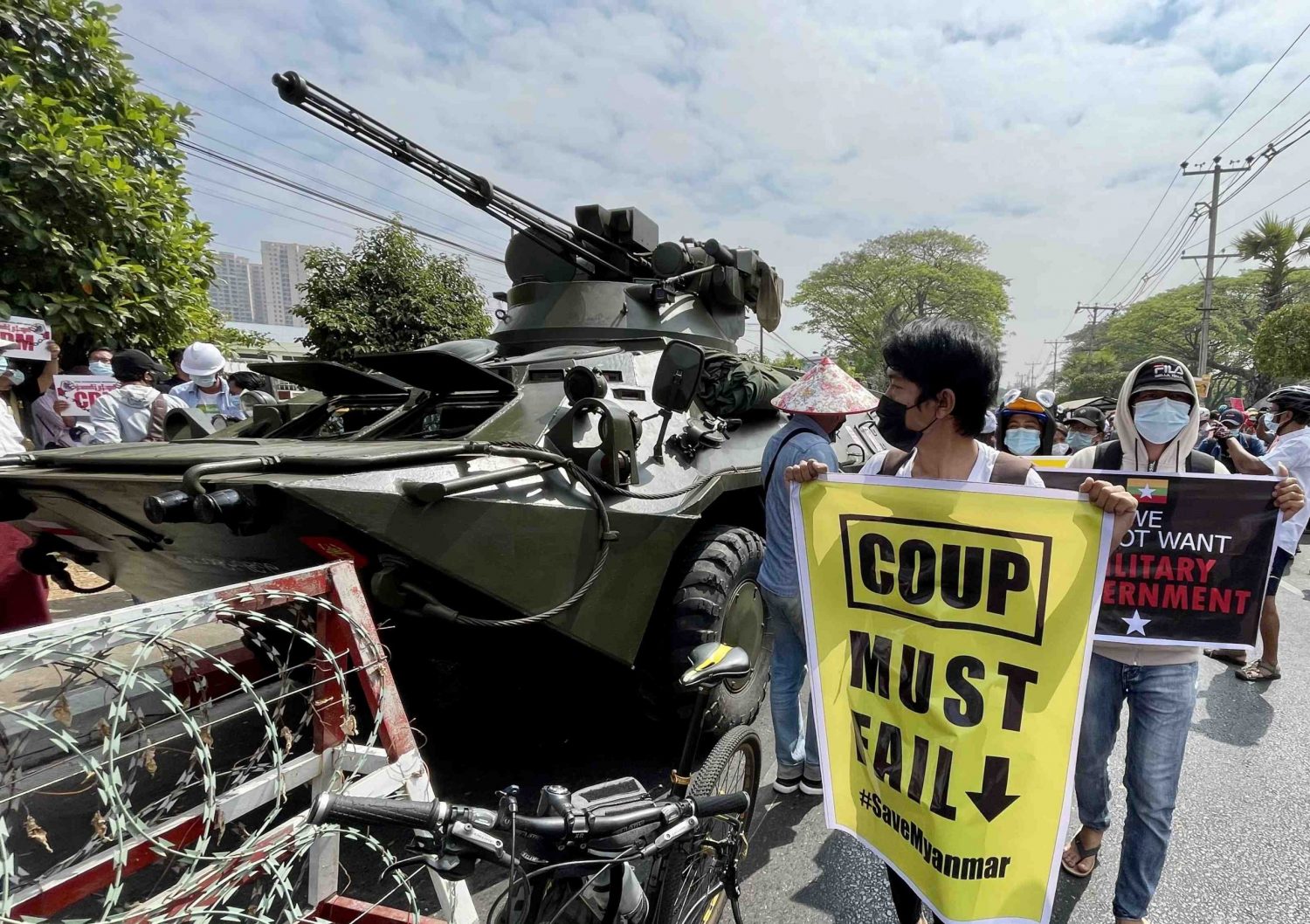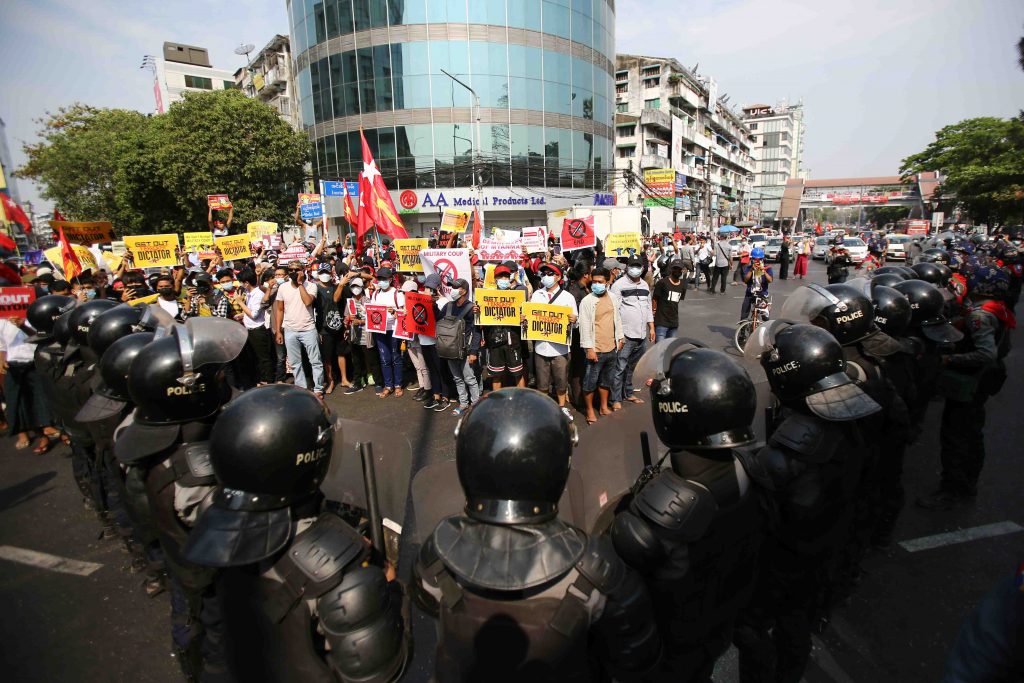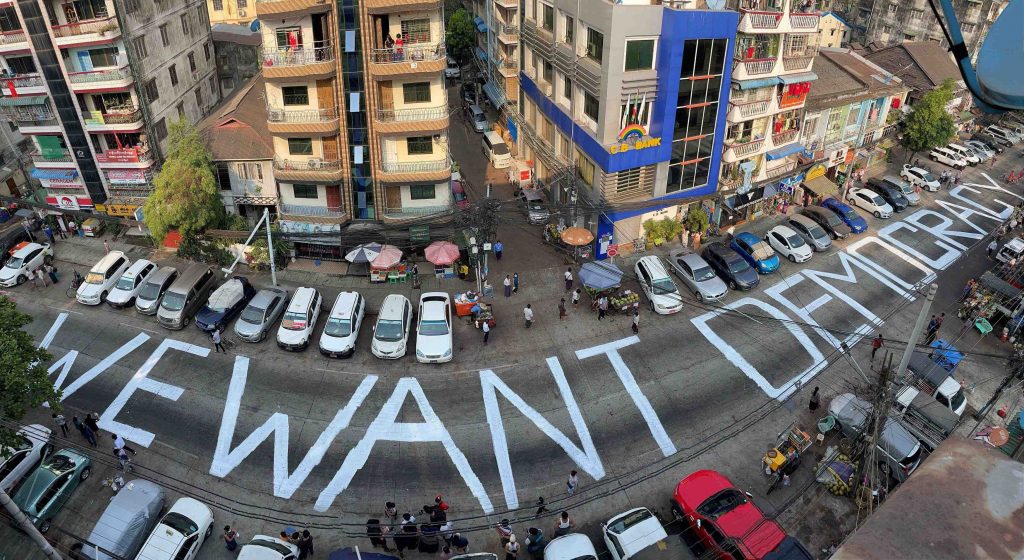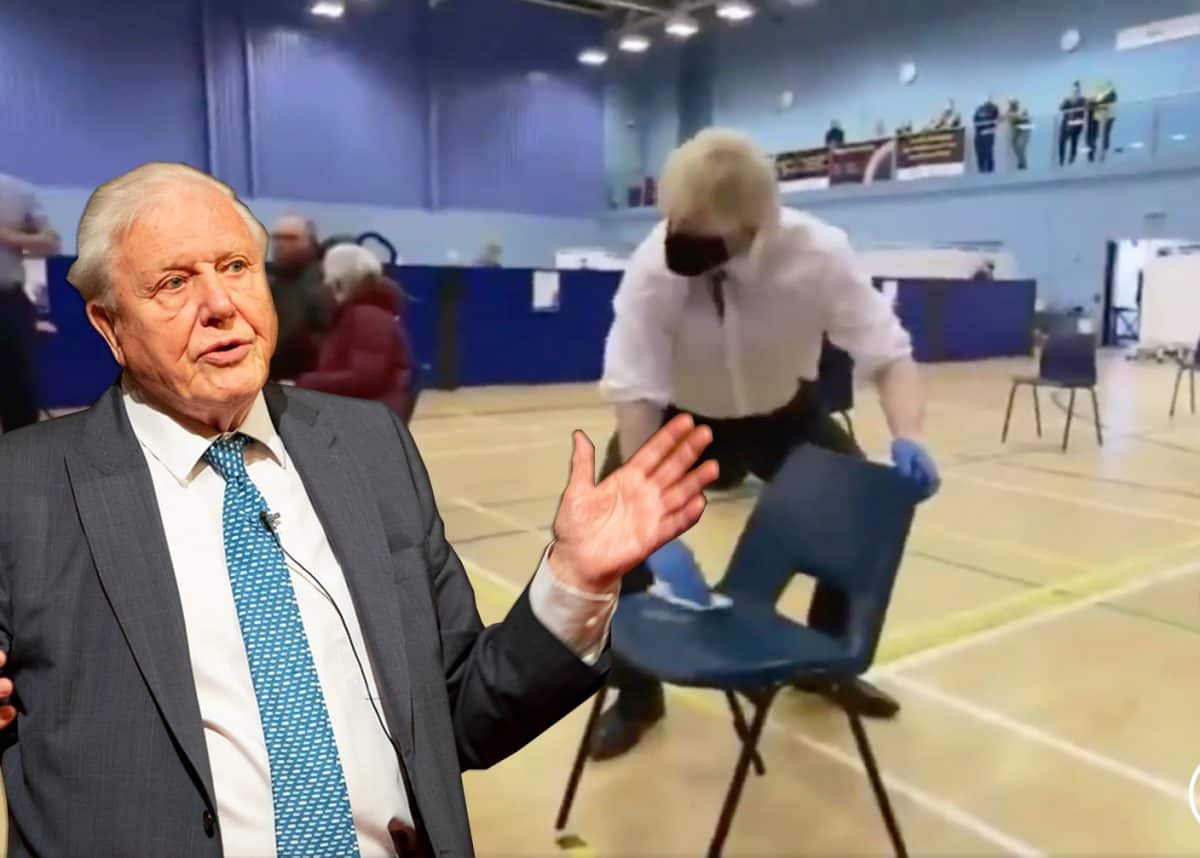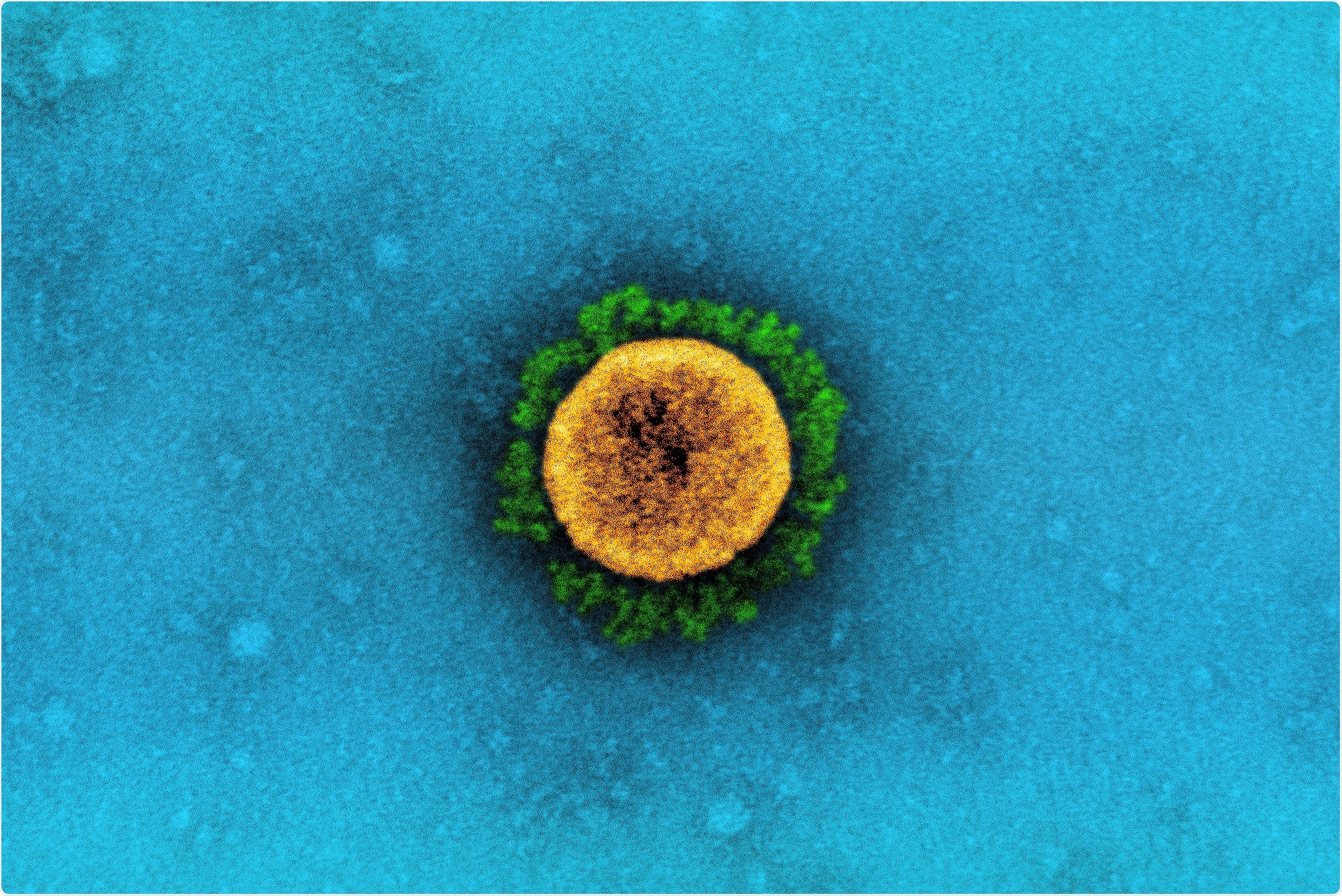Myanmar's security forces have been unable to stop more than two weeks of daily protests and a civil disobedience movement demanding the reversal of the military coup and the release of detained elected leader Aung San Suu Kyi.
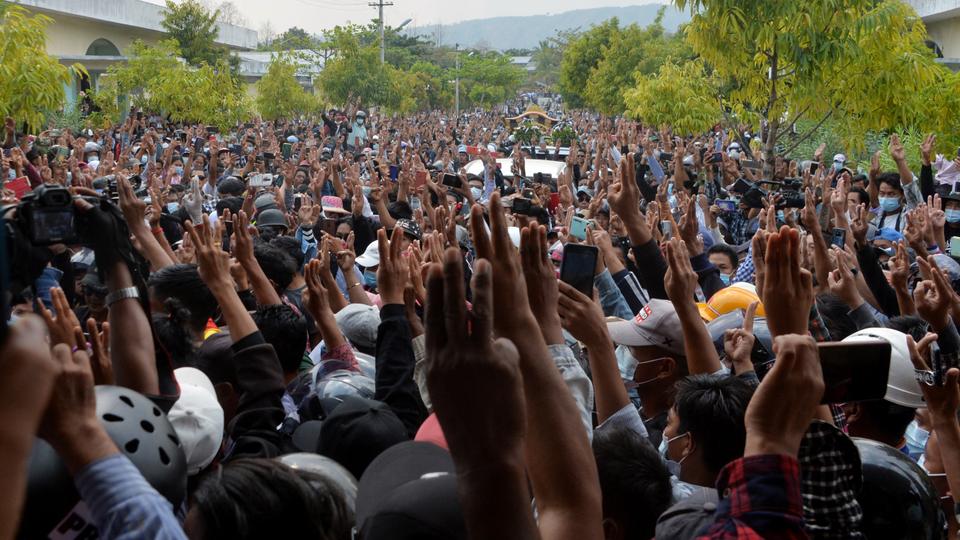
Protesters have gathered in Myanmar’s biggest city despite the ruling junta’s thinly veiled threat to use lethal force if people answered a call for a general strike opposing the military takeover three weeks ago.
Much of Myanmar has been in uproar over the generals ousting and detaining civilian leader Aung San Suu Kyi three weeks ago.
Despite roadblocks around the US Embassy in Yangon, more than a thousand protesters gathered there on Monday, while 20 military trucks with riot police had arrived nearby.
The crowds were gathering after supporters of the Civil Disobedience Movement, a loosely organised group leading the resistance, called for people to unite on Monday's date for a “Spring Revolution.”
The junta warned against the general strike in a public announcement carried last Sunday on state television broadcaster MRTV.
“It is found that the protesters have raised their incitement towards riot and anarchy mob on the day of 22 February. Protesters are now inciting the people, especially emotional teenagers and youths, to a confrontation path where they will suffer the loss of life,” the onscreen text said in English, replicating the spoken announcement in Burmese.
The junta's statement also blamed criminals for past protest violence, with the result that “the security force members had to fire back.” Three protesters have been shot dead so far.
The protest movement has embraced nonviolence and only occasionally gotten into shoving matches with police and thrown bottles at them when provoked.
The warning followed the deadliest weekend since the coup – two people were killed when security forces fired at protesters in the city of Mandalay, and a third man was shot dead in Yangon.
A young woman also died on Friday after being shot in the head at a protest and spending almost a fortnight on life support.
They, woman whose funeral was held on Sunday, was the first confirmed fatality of the protests, and she has emerged as a potent symbol of the anti-junta movement.
READ MORE: Resolution by UN rights body urges Myanmar military to free of Suu Kyi

'Warning to the junta'
United Nations special rapporteur Tom Andrews said he was deeply concerned by the junta's new threat.
"Warning to the junta: Unlike 1988, actions by security forces are being recorded & you will be held accountable," he tweeted.
But protesters appeared undeterred Monday, with thousands gathering in two neighbourhoods of Yangon, Myanmar's biggest city and commercial hub.
"We came out today to join in the protest, to fight until we win," said Kyaw Kyaw, a 23-year-old university student.
READ MORE: Explained: the coup in Myanmar and its political ramifications
"We are worried about the crackdown, but we will move forward. We are so angry."
In the Bahan township area, demonstrators sat on a stretch of road and created a sea of yellow and red banners in support of Suu Kyi.
Yangon residents woke up to a heavy security presence, including police and military trucks on the roads and an embassy district barricaded.
Markets and shops were expected to remain closed in solidarity with the protesters.
There were also demonstrations in the cities of Myitkyina and Dawei.
Protesters also took to streets of Naypidaw, the capital, on motorbikes.
READ MORE: What is happening in Myanmar? 'They messed with the wrong generation'
'Flagrant interference'
Myanmar's generals have responded to the uprising by ramping up gradually ratcheting up the use of force, and the number of political prisoners.
Troops and police have used rubber bullets, tear gas, water cannon and even live rounds on occasion.
Authorities have detained 640 people since the coup, according to the monitoring group Assistance Association for Political Prisoners.
Those targeted include railway workers, civil servants and bank staff who have walked off their jobs as part of the anti-coup campaign.
The junta has also severely curbed internet access overnight for eight straight days, according to the monitoring group NetBlocks.
Myanmar's foreign ministry on Sunday justified its use of force against protesters, and accused the United Nations and other governments of "flagrant interference" in the country's internal affairs.
"Despite facing the unlawful demonstrations, incitements of unrest and violence, the authorities concerned are exercising utmost restraint through minimum use of force to address the disturbances," it said in a statement.
The United States, Canada and Britain have imposed sanctions on the generals running Myanmar.
The United States warned again on Sunday of increased pressure.
"The United States will continue to take firm action against those who perpetrate violence against the people of Burma as they demand the restoration of their democratically elected government," US Secretary of State Anthony Blinken tweeted Sunday.
European Union foreign ministers are expected to meet Monday to approve their own sanctions against Myanmar's generals.


